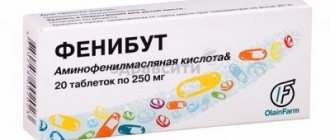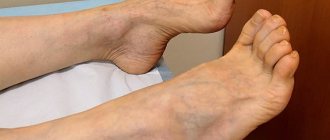Why does the body need B vitamins?
Our central nervous system, and especially its leader, the brain, simply requires sufficiently large amounts of energy for productive work.
B vitamins are involved in the synthesis of energy for the central nervous system. They are also noticed in close connections with the circulatory and cardiovascular system; without them, it also begins to “slow down”. Of course, not all B vitamins immediately perform the designated roles; each vitamin has its own “role,” and we will also talk about this in detail. But how do you know if you are lacking B vitamins?
You may notice a lack of energy, irritability, a tendency to tantrums, a basic decrease in mood, and even suspect that you are depressed. If the cause is B deficiency, the symptoms will most likely be supplemented by insomnia and loss of “former beauty” (brittle hair and nails, deterioration of skin quality).
B vitamins
Let's look at the unique roles of the seven vitamins:
B1 (thiamine)
Plays an important role in metabolism, helping to convert nutrients into energy, normalizes the condition of the cardiovascular and endocrine systems. Necessary for the protection of nerve cell membranes, transmission of nerve impulses and nutrition of the brain.
The richest food sources include pork, sunflower seeds and wheat germ.
B2 (riboflavin)
Helps convert food into energy and also acts as an antioxidant. Increases the level of hemoglobin in the blood, stimulates hematopoiesis. Improves the general condition of the nervous system.
Foods highest in riboflavin include organ meats, beef and mushrooms.
B3 (niacin, vitamin PP)
Plays a role in transmitting signals from cell to cell, normalizes inhibitory processes in the central nervous system, prevents the occurrence of neuroses and hysteria. Participates in metabolism, production and repair of DNA. It is also critically important for metabolic processes in the heart muscle, good blood circulation and normal blood clotting.
Food sources: chicken, tuna, lentils.
B5 (pantothenic acid)
Like other B vitamins, pantothenic acid helps the body obtain energy from food, and is also involved in the production of hormones, cholesterol and tissue regeneration. In the nervous system it is responsible for “feelings”, as it plays a role in the synthesis of acetylcholine, the most important substance for the transmission of nerve impulses in the central nervous system to the parasympathetic nervous system.
Liver, fish, yogurt and avocados are rich in pantothenic acid, but cooking them significantly reduces the dose.
B6 (pyridoxine)
Participates in the metabolism of amino acids, the production of red blood cells, and has a beneficial effect on the condition of blood vessels. In the nervous system, it plays a role in the creation of neurotransmitters (substances through which electrical impulses are transmitted in nerve cells). It is also responsible for the uptake of glucose by neurons and the absorption of magnesium, which ensures the transmission of nerve impulses. Pyridoxine also helps improve memory and mood, as it participates in the synthesis of serotonin.
Foods with the highest content: chickpeas, salmon and potatoes.
B9 (folic acid)
Necessary for cell growth and proper division, amino acid metabolism, formation of red and white blood cells, and prevention of anemia. In the nervous system, it is responsible for the synthesis of glycine, which has anti-stress and nootropic effects and regulates inhibition processes.
Can be obtained from leafy greens, liver and legumes.
B12 (cobalamin)
Perhaps the best known of all the B vitamins, it is vital for neurological function. Affects the formation of the sheath of nerve fibers (myelin), which protects nerve cells from destruction and strengthens the nervous system. Involved in the production of DNA and red blood cells. Improves muscle function, including the heart.
Contained in foods of animal origin: meat, eggs, seafood and dairy products.
Analgesics, nonsteroidal anti-inflammatory drugs (NSAIDs), muscle and epidural blockades have long been successfully used to relieve acute pain. Despite the fairly high effectiveness of drugs from the NSAID group, adjuvant agents are widely used, which make it possible to achieve an analgesic effect using lower doses of NSAIDs and, accordingly, a lower risk of side effects [1].
B vitamins can be such an adjuvant agent, due to their active participation in the metabolism of nervous tissue. According to a number of independent studies, B vitamins contribute to a more rapid regression of pain syndrome (PS) [2]. The direct neurotropic and analgesic effect of B vitamins determines the advisability of their use for B.S. Thus, vitamin B1 (thiamine) is involved in the synthesis of neurotransmitters and improves the conduction of nerve impulses, provides axonal transport, which determines the regeneration of nervous tissue. Vitamin B6 (pyridoxine) is included in the biosynthesis of protein that ensures synaptic transmission, normalizes the ratio of excitation and inhibition processes in the central nervous system, and helps maintain a sufficient level of microcirculation in tissues. Vitamin B12 (cyanocobalamin), in addition to participating in the process of hematopoiesis, blocks the synthesis of mediators of inflammation and pain, enhancing the effect of the antinociceptive system, including through improving serotonin metabolism, and also promotes the myelination of nerve cells.
In recent years, understanding of the variety of nociceptive, inflammatory, neuropathic, and traumatic/mechanical stimuli that influence the development of low back pain (LP) has expanded. Mechanical causes associated with the musculoskeletal system may contribute to the formation of BE, which leads to the appearance of nociceptive pain. However, at the same time, irritation or damage to the nervous system may occur, which will also affect the formation of BE, causing neuropathic pain [3]. Polycomponent P.B. is observed very often, therefore the concept and term “pain of mixed etiology” has been proposed. Combating pathogenetically mixed nociceptive and neuropathic pain will become much easier if therapy is optimized so that it takes into account the involvement of these different mechanisms in the formation of pain (Table 1) [4].
Table 1. Differentiated approach to pain therapy [4]
The indirect effect of B vitamins (in particular, thiamine) on the central nervous system occurs through the metabolism of γ-aminobutyric acid and serotonin, thus exhibiting an analgesic effect [5]. Thiamine, localized in the membranes of nerve cells, has a pronounced effect on the processes of regeneration of damaged nerve fibers, participates in ensuring energy processes in nerve cells, and the normal function of axoplasmic current. Pyridoxine exhibits an antioxidant effect and supports the synthesis of transport proteins in axial cylinders. Cyanocobalamin gives an analgesic effect, affects membrane lipids, participates in biochemical processes that ensure normal myelin synthesis, and is necessary for normal hematopoiesis and maturation of red blood cells. Coenzyme forms of cyanocobalamin (methylcobalamin, adenosylcobalamin) are necessary for DNA replication and cell growth.
For most diseases, it is advisable to use not just one B vitamin, but a complex of them, since in combination they potentiate the effect of each other. The use of a combination of thiamine, pyridoxine and cyanocobalamin normalizes reflex reactions, eliminates sensitivity disorders, increases the speed of conduction along nerve fibers, and provides a moderate analgesic effect [6], thus exerting its influence on the nociceptive component of pain. The metabolic effect of pyridoxine [7] affects the neuropathic component of pain, which is successfully used to prevent chronic pain.
Analgesic effect of B vitamins in an experiment
Experimental studies [8] (compression of the dorsal ganglion, ligation of the sciatic nerve and spinal root) show the analgesic effect of B vitamins in neuropathic pain. Thus, when the dorsal ganglion is compressed or a ligature is applied to the sciatic nerve, intraperitoneally administered vitamins B1, B6 and B12 reduce temperature hyperalgesia. Their repeated administration causes a persistent decrease in temperature hyperalgesia, and the combination of B vitamins produces a synergistic effect in various models of neuropathic pain. An experiment with tactile allodynia (a ligature placed on the spinal root) showed that thiamine, pyridoxine, and cyanocobalamin significantly reduce allodynia [9]. Simultaneous administration of thiamine or cyanocobalamin with dexamethasone significantly increases the antiallodynic effect [10]. In a similar experimental model of neuropathic pain, it was shown that benfotiamine and cyanocobalamin can significantly reduce pain, with the best effect obtained when used in combination with gabapentin [11].
C. Kopruszinski et al. [12] used biological models (rats) to evaluate the analgesic effect of vitamins B1, B6, B12 in relieving trigeminal neuropathic pain when administered in combination with carbamazepine for 5 days. Animals received either one of the B vitamins, a single injection of carbamazepine, or a combination of these drugs. Temperature and mechanical hypersensitivity in the head region were assessed. The study showed that repeated administration of vitamins B1, B6 and B12 (180, 180 and 18 mg/kg/day, respectively) reduces the phenomenon of hyperalgesia; administration of carbamazepine (30 mg/kg) significantly reduces only temperature hypersensitivity; the combination of drugs in lower doses of vitamins (B1 and B6 at 18 mg/kg/day, B12 at 1.8 mg/kg/day) with carbamazepine (10 mg/kg) significantly reduces temperature hyperalgesia. The authors showed that complex therapy with B vitamins significantly reduces the level of BS.
In another experiment on mice [13], the antinociceptive and anti-inflammatory effects of cyanocobalamin on acute and chronic pain due to the inflammatory process were studied. Vitamin B12 was administered intraperitoneally in different doses (0.87, 1 and 1.77 mg/kg). In acute pain, the antinociceptive effect was assessed using the “hot plate test”; for chronic - 14 days after ligation of the sciatic nerve with a “hot plate test”. The maximum anti-inflammatory effect was obtained using a dose of 1 mg/kg. Based on the data obtained, it was concluded that cyanocobalamin has an anti-inflammatory effect and can be recommended in the treatment of acute and chronic neuropathic pain.
Thiamine, pyridoxine, cyanocobalamin are traditionally classified as neurotropic drugs. In this case, one vitamin has a pathogenetic effect and, together with other vitamins, has a nonspecific positive effect on the functional state of the structures of the nervous system. A combined drug that includes neurotropic vitamins is neuromultivit. The tablet form of the drug contains 100 mg of thiamine hydrochloride, 200 mg of pyridoxine hydrochloride, 0.2 mg of cyanocobalamin; The injection form contains 100 mg of thiamine hydrochloride, 100 mg of pyridoxine hydrochloride, 1 mg of cyanocobalamin [14]. The main pharmacological effect of neuromultivit is determined by the properties of its constituent vitamins: stimulating metabolism in the central nervous system and regeneration of nervous tissue, as well as analgesics. Neuromultivitis has neurotrophic, regenerative, antioxidant, neuromodulatory and analgesic effects. The drug is recommended for use in the complex treatment of diseases accompanied by a deficiency of B vitamins, as well as in diseases accompanied by BS against the background of damage to the peripheral nervous system of various origins (degenerative changes in the spine with radicular syndrome, lumboischialgia, trigeminal neuralgia, polyneuropathy).
The effectiveness of B vitamins when administered orally
These neurotropic vitamins are widely used in the treatment of moderate and low intensity LBP, the treatment of neuropathic pain, and preventive treatment after episodes of exacerbation of chronic LBP [15]. The treatment tactics for PS in the back area should be carried out in stages, according to the principle of increasing the intensity of therapy if the previous treatment is ineffective. Initial therapy is carried out with NSAIDs and neurotropic vitamins. If the effectiveness is sufficient, further therapy is based on the principle of gradually reducing the intensity of treatment. When symptoms decrease in accordance with the clinical picture, the dosage of NSAIDs is reduced, then NSAIDs are discontinued, and maintenance or preventive therapy with neurotropic vitamins remains. In case of severe long-term pain syndrome, the duration of use of Neuromultivitis may increase. It seems important that the use of Neuromultivit allows patients with BE to reduce the dose of NSAIDs taken, as well as reduce the risk of chronicity and the development of repeated exacerbations of BE [16]. With B.S. neuromultivitis is prescribed orally, 1 tablet 1-3 times a day, the duration of the course is determined individually [17]
The wide spectrum of pharmacological action of neuromultivit allows its use in the treatment of many diseases of the peripheral nervous system [18]. The dosage regimen and timing of therapy, depending on the specific clinical syndrome, are selected individually (lumbago, lumboischialgia) or in standard average therapeutic dosages during a course of treatment (Table 2) [19].
Table 2. Algorithm for using neuromultivit in neurological practice
R.A. Manusharova et al. [20] conducted a study to evaluate the effectiveness and safety of the oral form of neuromultivitis. The study involved 24 patients with diabetes mellitus (DM), aged 23-62 years, the duration of DM was 12±0.8 years. The drug was prescribed 1 tablet 3 times a day after meals for 4 weeks. Before and after the end of treatment, individual tolerability of the drug, the presence of side effects, carbohydrate metabolism parameters, insulin doses and the frequency of hypoglycemic conditions were assessed. All patients were on insulin therapy with blood glucose levels monitored using individual self-monitoring devices. During neuromultivitis therapy, positive dynamics in the level of insulin and glycated hemoglobin (HbA1c) were noted, clinically - a decrease in the number of complaints of painful sensations (pain, paresthesia, numbness, burning), positive dynamics during sensitivity tests (pain, temperature, vibration, tactile) and in the reflex sphere (Achilles and knee reflexes). Thus, Neuromultivit can be recommended as a drug for complex pathogenetic therapy in patients with various forms of diabetic polyneuropathy (distal symmetric sensorimotor polyneuropathy, autonomic polyneuropathy).
In the study by A.Yu. Tokmakova et al. [21] showed the effect of neuromultivitis on the intensity of manifestations of distal polyneuropathy in patients with type 2 diabetes. The study involved 15 patients, average age 61.5±0.7 years, disease duration from 1 year to 30 years (17.7±0.9 years). All patients complained of discomfort in the lower extremities. The dynamics of the condition were assessed based on complaints (pain at rest, night pain, paresthesia, cramps in the muscles of the legs), examination data of the feet (dry skin, hyperkeratosis), and vibration sensitivity. The majority of patients included in the study were at risk of developing diabetic foot syndrome. All patients were diagnosed with severe signs of distal polyneuropathy. Neuromultivitis was prescribed 3 tablets per day, the duration of therapy was 3 months. At the end of the course of therapy, the number of patients with tactile anesthesia decreased. A reliable positive effect on the tactile and vibration sensitivity of the feet, a decrease in the intensity of pain while taking Neuromultivit allows us to recommend it as a drug that reduces the risk of developing trophic foot ulcers.
M. Mibielli et al. [22] conducted the DOLOR study to evaluate the effect of vitamins B1, B6 and B12 on enhancing the analgesic effect of diclofenac in patients with lumbago. In a randomized, double-blind, controlled, parallel-group clinical trial, 187 patients received twice daily oral combination therapy of diclofenac (50 mg), thiamine (50 mg), pyridoxine (50 mg), cyanocobalamin (1 mg); 185 patients received monotherapy with diclofenac (50 mg); the course of therapy did not exceed 7 days. The effectiveness of pain therapy was assessed using a visual analogue scale (VAS) using a 100-mm scale (where 0 mm is no pain, 100 mm is the most severe pain symptom). If sufficient pain reduction was achieved (VAS <20 mm), patients had the right to refuse treatment after 3 or 5 days. The main goal of the study was to determine the number of patients with sufficient pain reduction after 3 days of treatment: the proportion of subjects in the “complex therapy” group (46.5%) was significantly higher than in the “monotherapy” group (29%). When prescribing combination therapy, a significant decrease in BP, improvement in mobility and functionality was noted. Thus, it was shown that the administration of vitamins B1 (50 mg), B6 (50 mg) and B12 (1 mg) in combination with diclofenac (50 mg) allows for better relief of acute back pain than NSAID monotherapy ( p
<0,05).
Subsequently, a double-blind randomized comparative study was conducted involving patients with BE, PS in the hip and neck of a non-traumatic nature [23]. All patients were randomized into 2 groups: 40 patients of group 1 (group D) received a combination of drugs diclofenac-cholestyramine once a day, 1.5 mg of uridine triphosphate (UTP), 2.5 mg of cytidine monophosphate (CMP) and 1 mg of hydroxocobalamin 3 times a day; 41 patients of group 2 received 1.5 mg UTP, 2.5 mg CMP and 1 mg hydroxocobalamin 3 times a day. The effectiveness of pain therapy was assessed using VAS, the examination was carried out 3 times. VAS scores in group D decreased by 2 times (from 59.44 initially to 30.35 mm). The results indicate that vitamin B12 has a stimulating effect on nerve regeneration and remyelination. Thus, vitamin B12 can act as a DNA methyl donor (high concentrations activate gene transcription), increasing protein synthesis for nerve regeneration.
A retrospective analysis of data obtained during the DOLOR study was carried out [24], which showed that complex therapy of acute BE using NSAIDs (50 mg diclofenac) in combination with B vitamins (50 mg thiamine mononitrate, 50 mg pyridoxine hydrochloride, 1 mg cyanocobalamin ) is more effective compared to diclofenac monotherapy. Data analysis is based on the results of the Patient Functional Capacity Questionnaire .
.: Patient functionality questionnaire - PFQ), consisting of 12 items. The patients were divided into 2 groups: Group 1 received diclofenac monotherapy, Group 2 received combination therapy with diclofenac and B vitamins. An increase in the total PFQ score was observed in both groups, but with a more pronounced emphasis on individual indicators (sleep quality, mobility, the ability to wash and dry clothes, the ability to walk long distances, maintaining balance) in the combination therapy group. The results obtained confirm previously published data, which indicate the positive effect of the combination of vitamins with diclofenac in the treatment of patients with LBP, showing high efficiency in the treatment of lumbago in a short time.
The effectiveness of using the injectable form of B vitamins
Similar results on the prescription of B vitamins in the complex treatment of post-traumatic BS (lower limb bone fractures or surgery) were obtained in a single-center, prospective, randomized, double-blind clinical trial [25]. The effectiveness of prescribing B vitamins in 122 patients during diclofenac therapy was assessed. The effectiveness of pain therapy was assessed using VAS. All patients were randomized into 2 groups: group 1 took diclofenac (75 mg), group 2 - diclofenac (75 mg) and B vitamins (100 mg thiamine, 100 mg pyridoxine, 1 mg cyanocobalamin intramuscularly 2 times a day). Patients assessed the severity of pain during two periods: 24 hours before surgery (preoperative pain) and 24 hours after (postoperative pain). A more pronounced analgesic effect (reduction of pain at rest) was obtained in group 2 of patients compared to the diclofenac monotherapy group. The results of the study showed that the addition of vitamin B to diclofenac leads to an enhanced analgesic effect, in particular to the relief of acute pain.
O.S. Levin et al. [26] conducted an open, controlled study of the effectiveness of B vitamin complexes in 38 patients (mean age 42.5±10.1 years) with moderate/severe BS secondary to discogenic lumbosacral radiculopathy. The main group included 19 patients who received intramuscular injections of vitamin B (100 mg B1, 100 mg B6, 1 mg B12, 20 mg lidocaine) for 10 days in combination with intramuscular injections of diclofenac (75 mg) followed by switching to tablet form vitamins (1 tablet 3 times a day, 14 days); patients in the comparison group received only intramuscular injections of diclofenac (75 mg). A significant and moderate effect in the main group was noted in 66% of cases, in the control group - in 34% ( p
<0.05).
In the main group, after 3 months, BS was absent or minimal in 63% of patients, in the control group - in 50% ( p
<0.05). The results obtained indicate that the vitamin B complex can potentiate the analgesic effect of NSAIDs and contribute to a more rapid and lasting regression of PS.
As part of the open multicenter all-Russian observational program MINERVA [27], adherence to and satisfaction with neurotropic therapy with B vitamins was assessed in patients with BS and neuropathies of various etiologies. The statistical analysis included data from 33 centers that observed 1203 patients with MS of various localizations and/or diseases of the nervous system on an outpatient basis who received B vitamins for less than 4 weeks. In 51% of cases, the prescription of vitamins was associated with BE and other musculoskeletal disorders, in 2nd place were various types of diabetic neuropathies, in 3rd place were mononeuropathies (tunnel, compression-ischemic neuropathies, Bell's palsy). Adverse events were observed in 0.3% of patients receiving injection or stepwise therapy for dorsalgia. Thus, the preliminary results of the MINERVA study allow us to conclude that Russian doctors are highly committed to neurotropic therapy with B vitamins.
Neuromultivit does not contain lidocaine, which reduces the risk of side effects, especially from the cardiovascular system. It is recommended for use as part of complex therapy for a number of neurological diseases accompanied by BS of various localization (LP, cervicalgia, etc.) and origin (diabetic and alcoholic polyneuropathy). Contraindications to the use of Neuromultivit are: hypersensitivity to the active or auxiliary components of the drug, severe and acute forms of decompensated chronic heart failure, pregnancy and breastfeeding, children under 18 years of age. The contents of Neuromultivit ampoules should be injected exclusively deep into the muscle; in the acute period, the drug is prescribed 1 injection per day until the severity of symptoms decreases; in the subacute period - 1 injection 2-3 times a week; The duration of the course is as recommended by the doctor. The patient should be informed that while using the injection form of the drug Neuromultivit, taking multivitamin complexes containing B vitamins is not recommended.
The new injection form of the drug neuromultivit (solution for intramuscular injection) allows the use of a two-stage approach in the treatment of B.S. At the first stage, an injectable form of neuromultivitis is prescribed to relieve acute BS; at the second stage, an oral form is prescribed to prevent chronicity and recurrence of pain. Scheme of two-stage therapy for neuromultivitis: at the initial stage, the drug is administered 1 injection intramuscularly (deep) of 2 ml daily for 5-10 days, followed by a transition to more rare intramuscular injections 2-3 times a week for 2-3 week; at the second stage, the drug is prescribed orally, 1 tablet 3 times a day for 4 weeks; as symptomatic therapy - 1 tablet 3 times a day for 3 weeks.
The authors declare no conflict of interest.











